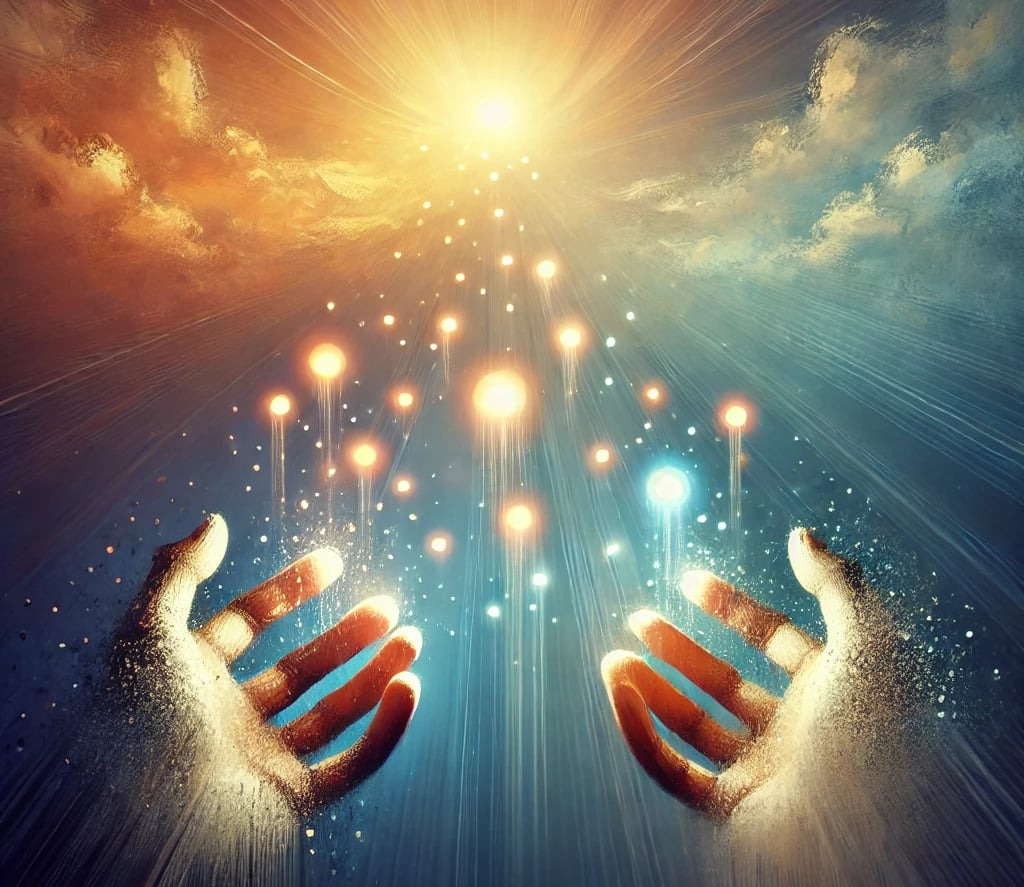The Alchemy of Forgiveness: Transforming Pain into Peace
Explore the transformative power of forgiveness, where pain and resentment are turned into peace, understanding, and connection. This post delves into the emotional weight of unforgiveness, the freedom that comes from letting go, and the steps to cultivate empathy, self-compassion, and healthy boundaries. Discover how forgiveness acts as a healing balm, nurturing your inner peace and creating a ripple effect that contributes to a more harmonious world.
8/16/20244 min read


Forgiveness is an intricate dance, a delicate ballet performed on the stage of the human heart. It isn’t a mere erasure of the past, like wiping a slate clean. Instead, it's akin to an alchemist’s transformation – taking the raw, jagged ore of pain and resentment and transmuting it into something precious: peace, understanding, and even, perhaps, a renewed sense of connection.
The Weight of Unforgiveness
Imagine carrying a heavy backpack, laden with stones. Each stone represents a past hurt, a grudge held close. At first, it might seem manageable. But as you journey through life, the backpack grows heavier, each stone digging into your shoulders, slowing you down, hindering your progress. This is the burden of unforgiveness. It weighs on us, clouding our judgment, poisoning our relationships, and sapping our joy.
The Shackles of Resentment
Unforgiveness can also be likened to a pair of rusty shackles, binding us to the past. We replay hurtful events in our minds, reliving the pain, fueling our anger. These shackles prevent us from moving forward, keeping us trapped in a cycle of bitterness and negativity.
The Key to Freedom
Forgiveness is the key that unlocks these shackles, allowing us to step out of the prison of the past and into the open field of the present. It's a conscious choice to release the grip of resentment, to refuse to be defined by the hurts we've endured. It doesn't mean condoning the actions that caused us pain, nor does it imply forgetting. Rather, it's about acknowledging the wound, cleaning it, and allowing it to heal.
The Healing Balm
Forgiveness acts as a soothing balm on our wounded hearts. Like a gentle breeze on a scorching day, it offers relief from the burning heat of anger and resentment. It allows us to breathe deeply again, to feel the cool touch of peace and acceptance.
The Bridge to Connection
When we forgive, we build a bridge back to the person who hurt us. This doesn't mean we have to become best friends or even maintain a close relationship. But it opens the door to understanding, compassion, and the possibility of reconciliation. It's like mending a torn tapestry, carefully stitching the frayed edges back together, creating a new, stronger fabric.
The Inner Garden
Forgiveness also nurtures our own inner garden. Just as weeds can choke the life out of a beautiful flowerbed, so too can resentment and bitterness poison our souls. When we forgive, we clear away these weeds, allowing love, joy, and peace to flourish.
The Ripple Effect
The act of forgiveness creates a ripple effect, spreading outwards like waves on a still pond. When we forgive, we not only heal ourselves but also contribute to a more compassionate and harmonious world. It's like planting a seed of kindness that blossoms into a beautiful flower, spreading its fragrance far and wide.
The Journey of a Thousand Miles
Forgiveness is not a destination, but a journey. It takes time, patience, and courage. There will be setbacks and challenges along the way. But like any worthwhile journey, the rewards are immeasurable.
Steps on the Path
Acknowledge the Pain: The first step is to acknowledge the pain you've experienced. Don't try to bury it or pretend it doesn't exist. Allow yourself to feel the hurt, the anger, the sadness. It's like tending to a wound – you need to clean it before it can heal.
Cultivate Empathy: Try to understand the perspective of the person who hurt you. This doesn't mean excusing their actions, but it can help you to see them as a flawed human being, capable of making mistakes, just like you. It's like putting on a different pair of glasses, allowing you to see the world from a new angle.
Choose to Forgive: Forgiveness is a choice, a conscious decision to release the grip of resentment and anger. It's like opening your clenched fist and letting go of the stones you've been carrying for so long.
Practice Self-Compassion: Be kind and patient with yourself. Forgiveness is not always easy, and it's okay to take your time. It's like nurturing a delicate plant – it needs sunlight, water, and gentle care to grow strong.
Set Boundaries: Forgiveness doesn't mean allowing yourself to be hurt again. It's important to set healthy boundaries to protect yourself. It's like building a fence around your garden – it keeps out unwanted intruders while still allowing the beauty within to flourish.
The Gift of Forgiveness
Forgiveness is a gift we give ourselves, as well as others. It frees us from the chains of the past, allowing us to live fully in the present. It opens our hearts to love, joy, and peace. And it empowers us to create a more compassionate and harmonious world.
The alchemy of forgiveness is a transformative process, turning the lead of pain into the gold of peace. It's a journey worth taking, a path that leads to healing, freedom, and a deeper connection with ourselves and others. Remember, forgiveness is not a sign of weakness, but a testament to your strength and courage. It's a choice to embrace the light, even in the face of darkness. So, take that first step today. Let go of the past, open your heart, and embrace the transformative power of forgiveness.
info@utopianship.com
